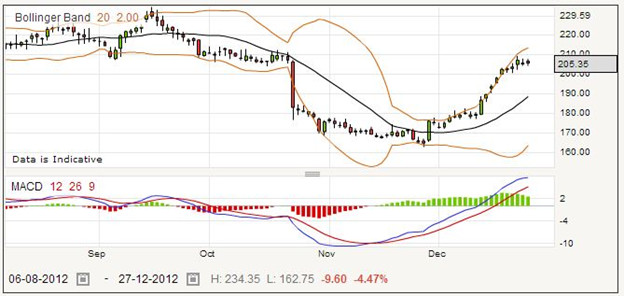National Express Group is a multinational transport company, operating bus, coach, and rail services. It has had a chequered history, but its daily price chart below shows that there have been good opportunities for spread betting.

The company currently operates not only in the UK, where its headquarters are in Birmingham, but also in the United States, Canada, and across Europe. It was originally founded in 1972 as the brand of the National Bus Company, which was state owned at that time. It was privatized in the 1980s, and in 1988 there was a management buyout.
Despite some early difficulties, in 1992 the National Express Group was floated on the London Stock Exchange. During the 90s the Group purchased various companies associated with transport, including East Midlands Airport, Gatwick Express rail, and other bus operations and rail franchises. In 1998 it branched out into the US, buying a student transportation bus company located in the Midwest. In 1999 it purchased Australia’s largest bus operator, and went on to win train and tram franchises in the Australian state of Victoria.
Along with other purchases over the years, National Express also had to dispose of some which it found unable to operate. One of its major failures recently has been the railway East Coast franchise which it won in 2007. The franchise was taken over by another company in 2009, and other railway franchises were reviewed following this failure. There were even talks of takeovers, but to date National Express is still surviving.
This background however explains the patchy performance that you will see if you look at the past few years of stock prices. This is no problem to those who look to make money from spread betting, because it is as easy to profit from bad performance as from good, as long as you bet in the right way.
National Express Group Rolling Daily: How to Spread Bet on National Express Group Shares?
National Express has had an active few years, with share prices going up and down and no consistent growth. You need to assess its technicals to determine which way you want to bet. Say you believe that the price is going down in the short term, you might place a sell bet for £18 per point. The current quotation for a daily rolling bet is 204.99 – 206.01.
Should the price go down in the short term, you could close your bet and capture your profit when the quote reaches 187.39 – 188.41. You took out your bet when the selling price was 204.99, and you closed it at a price of 188.41. That means you gained 204.99 minus 188.41 points, which is 16.58 points. With a stake of £18 per point, this amounts to a profit of £298.44.
If you got it wrong and the price went up instead of down, then you would have to close your bet for a loss simply to prevent further losses. Perhaps the price might go up to 213.79 – 214.81, so you would close your bet at 214.81. Taking 204.99 away from 214.81, you would find that you had lost 9.82 points. With an £18 stake, this amounts to a loss of £176.76.
Many spread traders decide to use a stop loss order to help them curtail their losses. This order requires your spread betting provider to close your bet if/when it loses by a certain amount, and you do not have to provide any further instructions in order to cut your losses. Say a stop loss order closed your losing bet at 210.27 – 211.29. The bet opened at 204.99, and your stop loss order closed it at 211.29, for a loss of 6.30 points. For your £18 stake, this amounts to £113.40.
National Express Group Futures Style Bet
For an interim length of bet on National Express, you could look to a futures style bet. The current quote for the far quarter futures bet, for which the expiration is more than six months away, is 205.73 – 208.22. Taking out a long bet at 208.22, you decide to stake £14 per point.
For the sake of example, assume that the price goes up to 232.13 – 234.62, and you close the bet to capture your profit. Your bet opened at a price of 208.22, and it closed at the selling price of 232.13. That means you made 232.13 minus 208.22 points, which is 23.91 points. You decided to stake £14 per point, which means you gained 23.91 times £14, a profit of £334.74.
For the second example, imagine that this bet lost. It might have dropped to 196.93 – 199.42 before you decided to close it and cut your losses. With an opening price of 208.22 and a closing price of 196.93, this time you would have lost 11.29 points. Multiplying this by £14, your losses work out to £158.06.
But if you had used a stop loss order, you might have been able to save some money. As the stop loss order requires your spread betting provider to close a losing bet once it reaches a level that you set, it saves you having to watch the market and act quickly when you see the price drop. The stop loss order might have closed the trade for you at 200.45 – 202.94. As before, the starting price was 208.22, and this time the stop loss closed the trade for you when the selling price was 200.45. That means you lost 208.22 minus 200.45 points, which works out to 7.77 points. For your £14 per point wager, your total losses work out to £108.78.